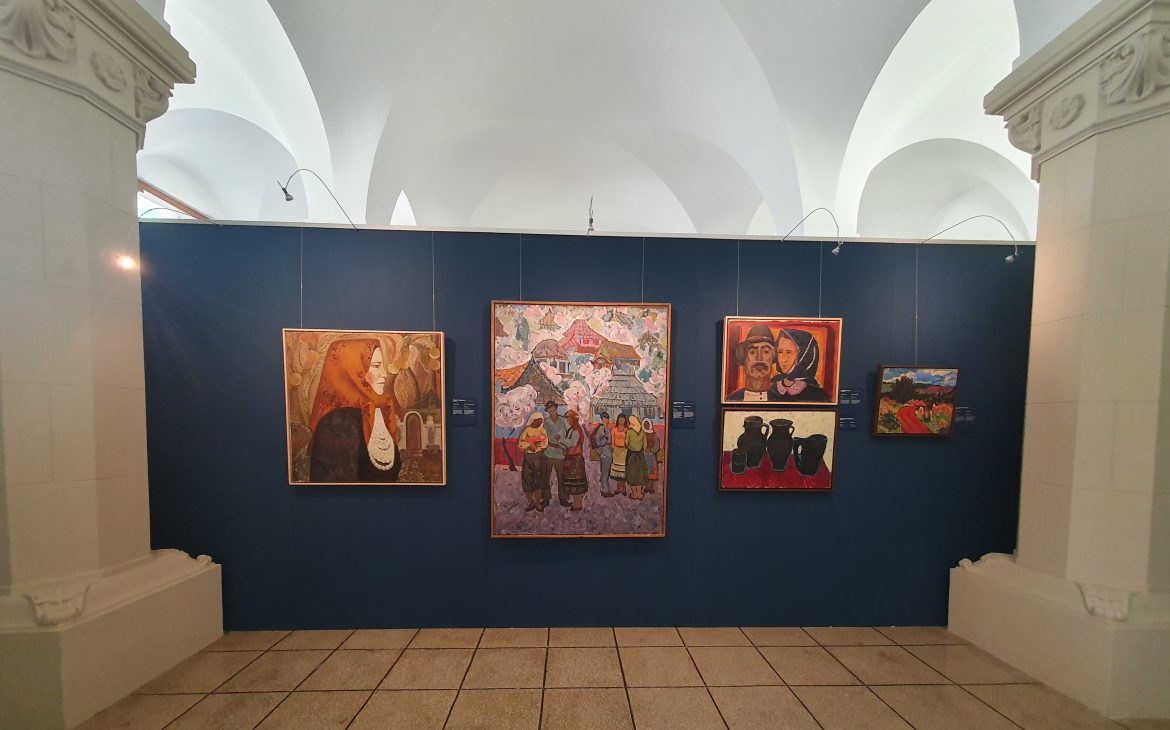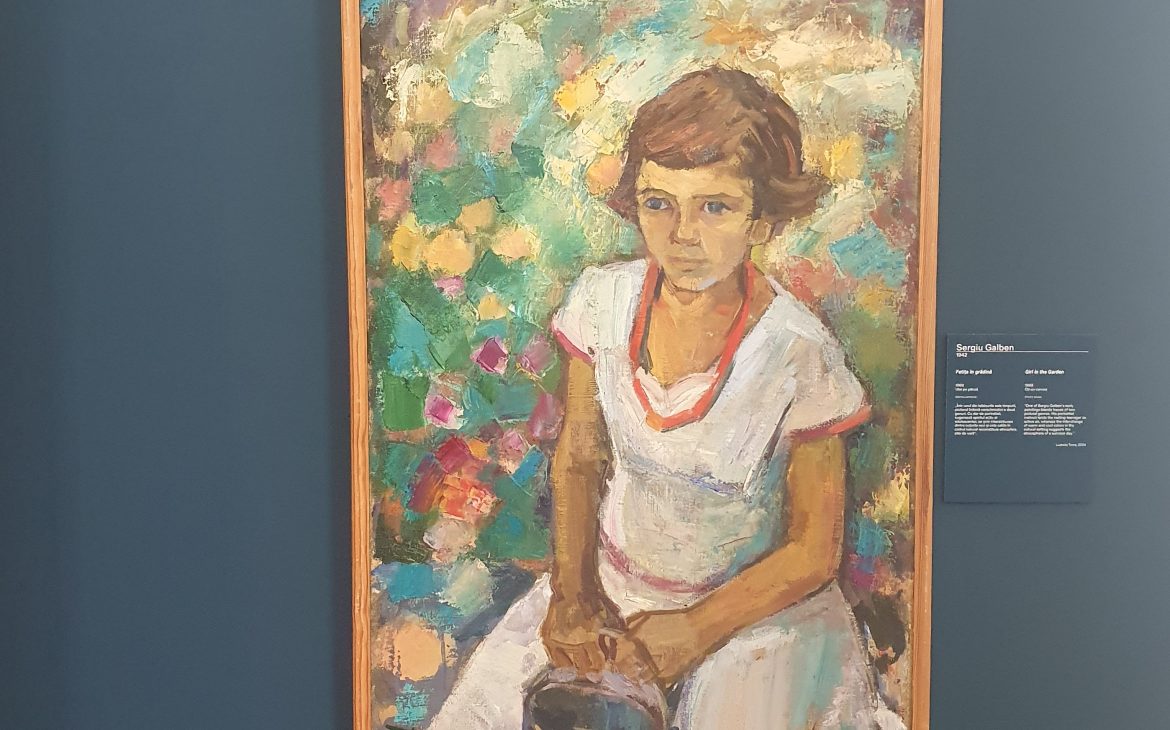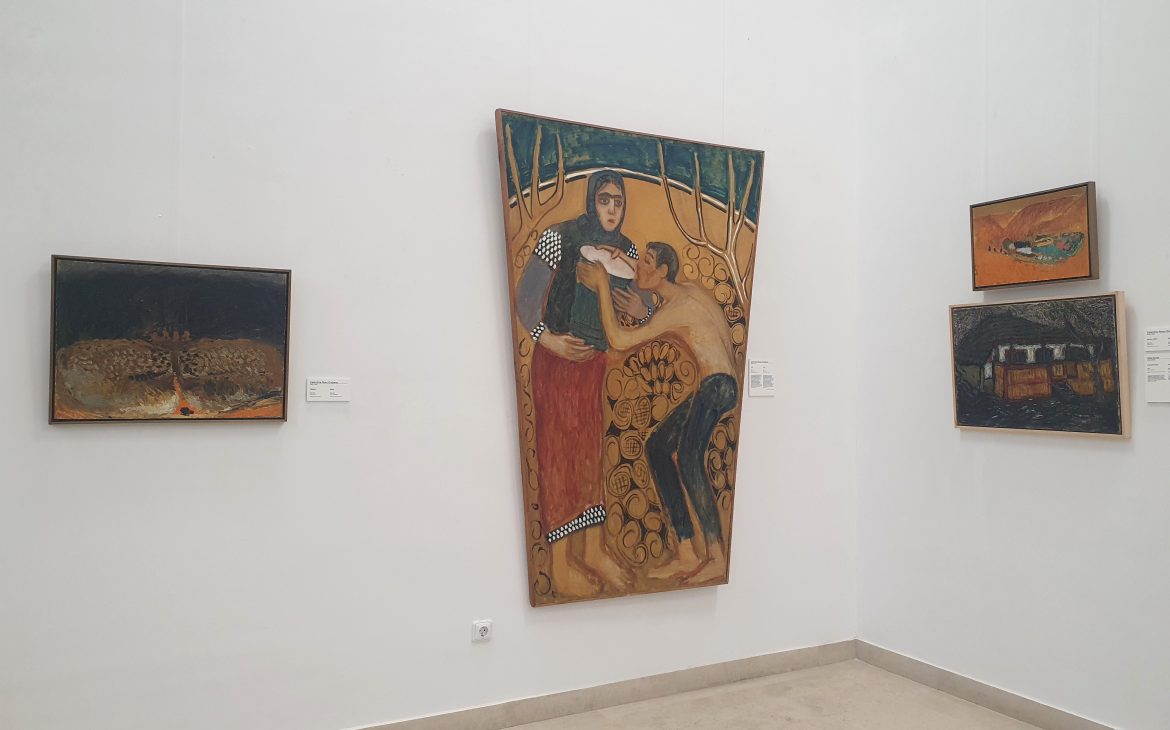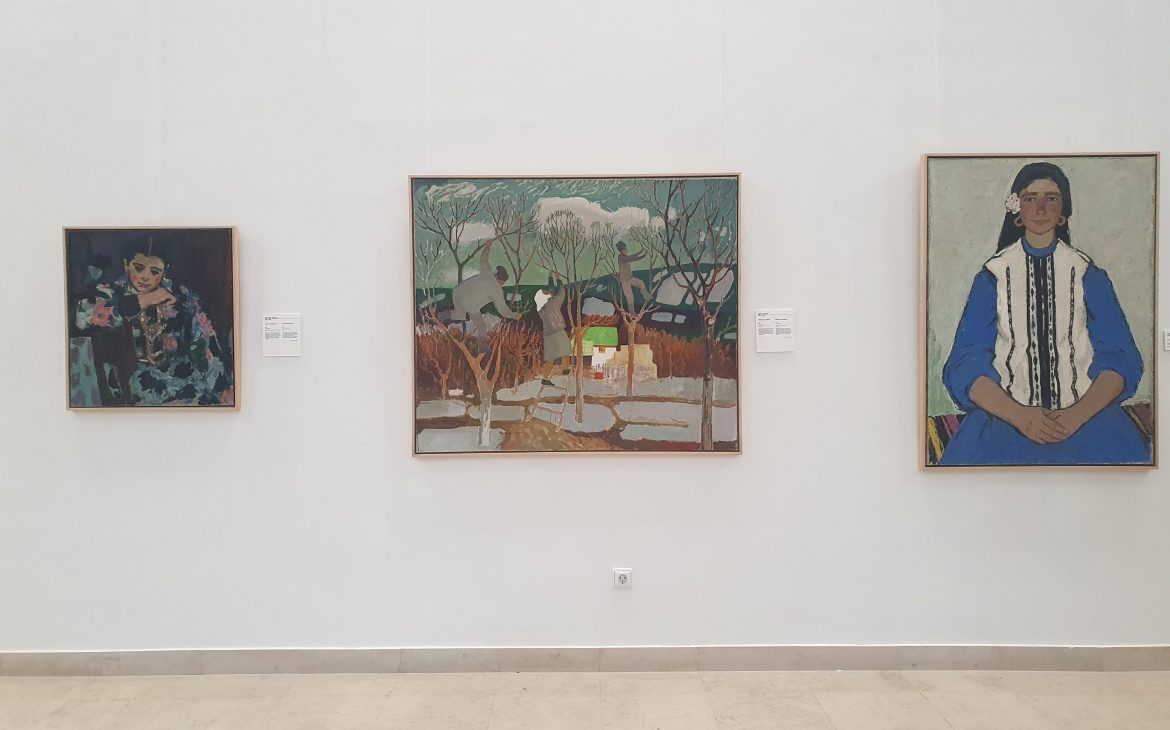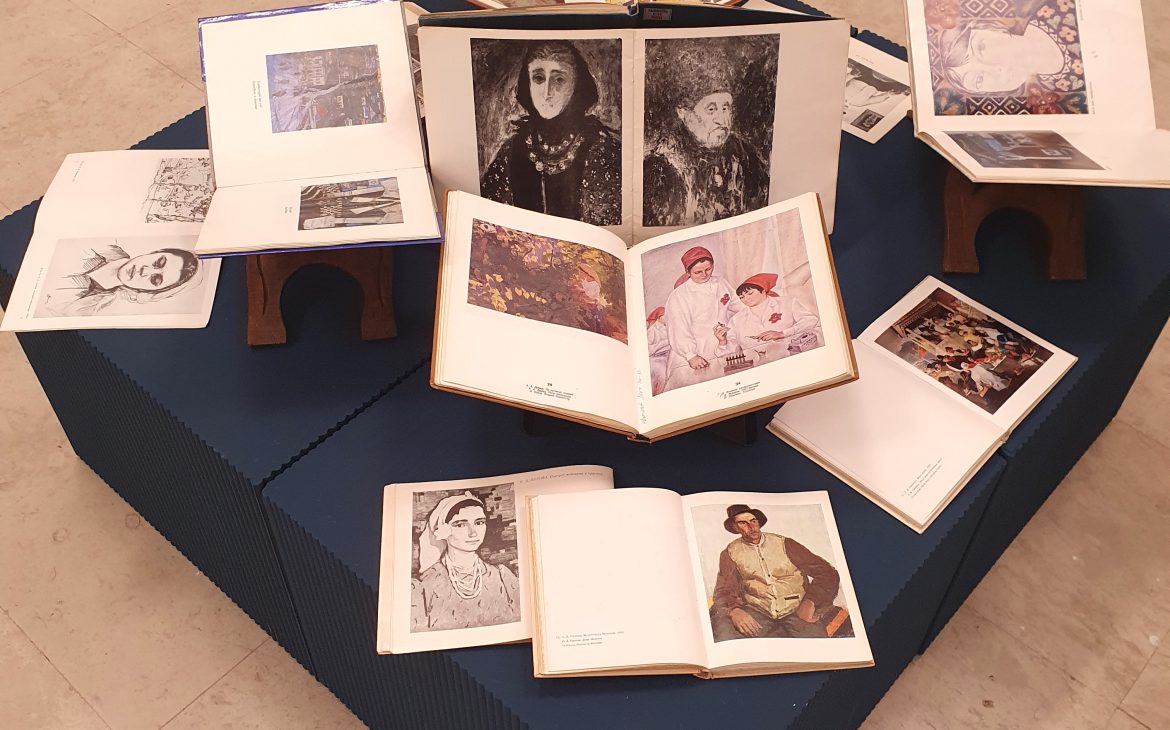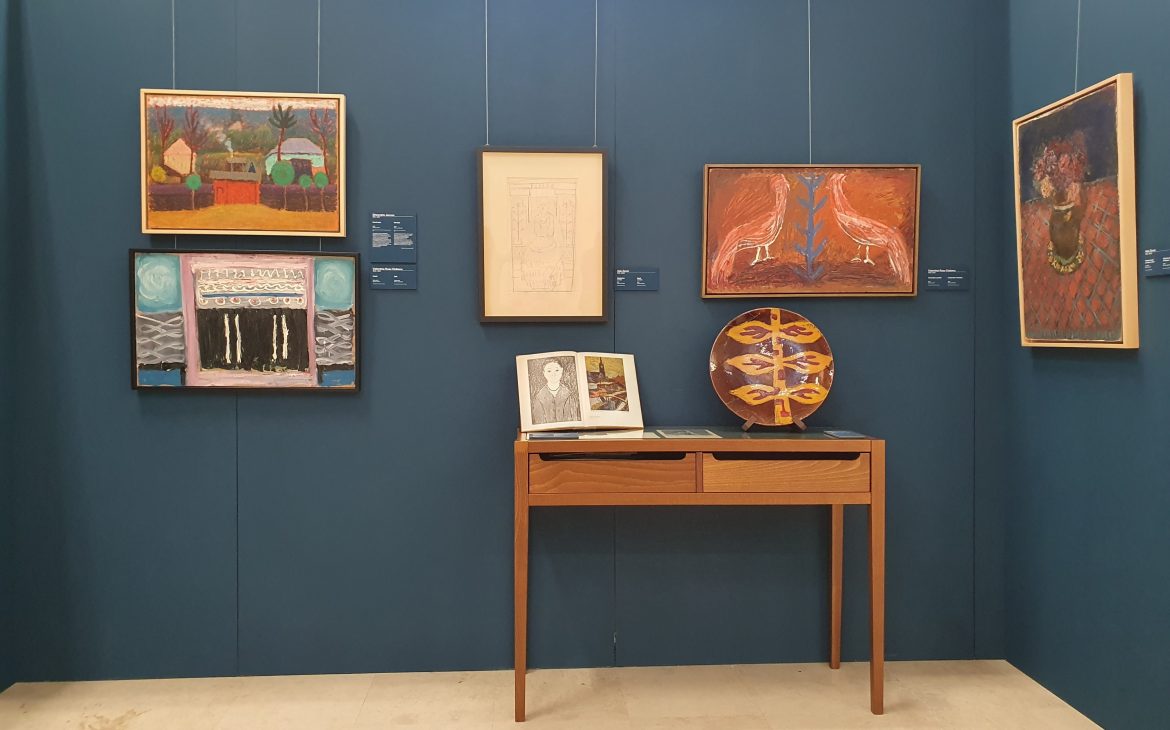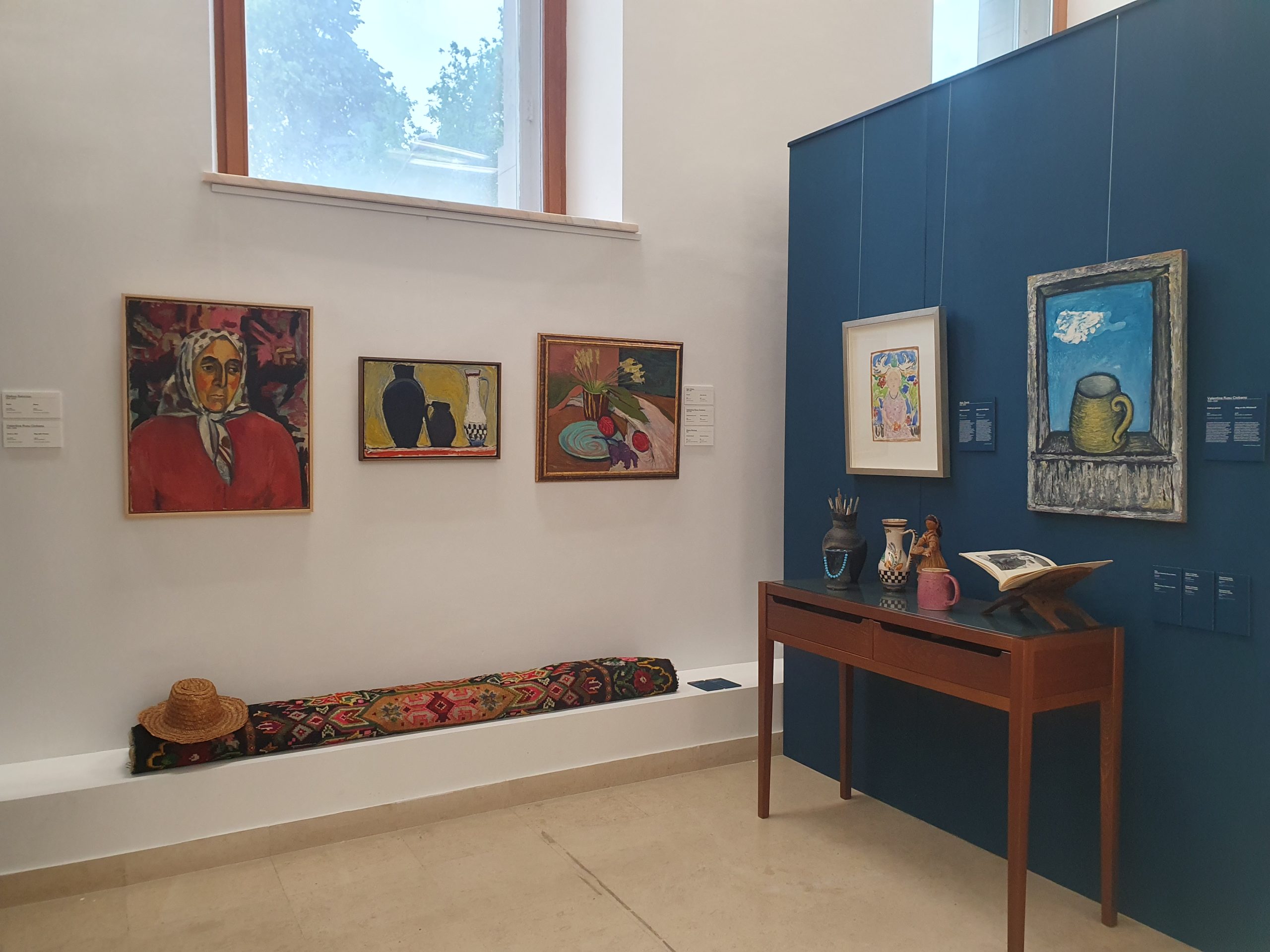The exhibition “Culorile „dezghețului”. Satul basarabean în pictura anilor 1960/ The Colors: of “Thaw”/ The Bessarabian Village in the Painting of the 1960s”, organised by the National Museum of the Romanian Peasant and the Arbor Association for Culture and Arts, presents the works of 14 Bessarabian artists.
The exhibition is part of the cultural project “Grecu Rusu Ciobanu and Others: Redefining Aesthetics in 1960s Basarabia”, organized by the Arbor Association in partnership with the National Museum of the Romanian Peasant, the Embassy of the Republic of Moldova in Romania, the Union of Plastic Artists from the Republic of Moldova, the National Museum of History of Moldova, the National Library of the Republic of Moldova, and ARCUB – the Cultural Center of Bucharest Municipality.
The exhibition was inaugurated by His Excellency, the Ambassador of the Republic of Moldova to Romania, Victor Chirilă, Virgil Ștefan Nițulescu, Manager of the National Museum of the Romanian Peasant, Ludmila Toma, the curator of the exhibition, art historians Constantin I. Ciobanu, Dumitri Șibaev, and Florina Breazu, President of the Union of Plastic Artists from the Republic of Moldova.
The cultural project “Grecu Rusu Ciobanu and Others: Redefining Aesthetics in 1960s Basarabia” represents a continuation of the effort made by the Arbor Association to popularize, among the Romanian public, the artistic creation of the most important names in contemporary art from Basarabia. The project documents the artistic activity of painters from Chișinău and highlights the efforts of innovation in the context of the Khrushchev Thaw, a historical period resulting in a relaxation of vision, a refreshment of plastic language, which gains in spontaneity and chromatic intensity.
The first to change their stylistic references were the painters who began their training in the 1940s, in Bucharest or Iași, and completed it in the post-war period. These include Mihail Grecu, Valentina Rusu Ciobanu, Ada Zevin, Glebus Sainciuc, and Igor Vieru, who started their quests from the achievements of the post-impressionists and fauvists, whom they were attracted to in their youth. Their boldness was sanctioned by the cultural authorities of the time, their works were criticized, and even removed from exhibitions. However, the changes in pictorial thinking in Basarabia were irreversible, crystallizing the art school of Chișinău during that period.
The specific features of the Moldovian school are decorative expressiveness and the interpretation of subjects in a lofty poetic key. The images often acquire metaphorical, symbolic significance, exploiting influences from folk tradition. These notes of folk art are seen in the two-dimensional representation of objects, in rhythmic precision, and in the boldness of chromatic combinations and material textures.
The “Thaw Colors: The Bessarabian Village in the Painting of the 1960s” exhibition presents largely unknown creations, originating from the family collections of the artists, private collections, supplemented with works from the heritage of the Union of Plastic Artists from the Republic of Moldova and from the National Museum of History of Moldova. Considering the specificity of the hosting museum, the exhibition presents plastic creations with a rural theme, through which the Basarabian masters demonstrate a profound understanding of the spirit of folk art.
The exhibition discourse is complemented by the screening of a video material, produced by the Arbor Association, which clarifies the historical and cultural context in which the Basarabian artists lived and worked, with explanations and testimonies brought by art historians Ludmila Toma, Constantin I. Ciobanu, and Tudor Stavilă. Additionally, the audience will have access to an exhibition catalog, with complementary studies signed by the invited historians in the project.
In addition to paintings, personal objects of the artists are exhibited, a documentary film about the artist Glebus Sanciuc, a promoter of masks inspired by popular tradition (“Glebus,” 1983, directed by V. Jereghi), as well as a rich collection of art publications from the National Library of the Republic of Moldova and private collections.
Artists: Mihail Grecu, Valentina Rusu Ciobanu, Ada Zevin, Glebus Sainciuc, Igor Vieru, Gheorghe Jancov, Eleonora Romanescu, Olga Orlova, Elena Bontea, Sergiu Cuciuc, Sergiu Galben, Ludmila Țonceva, Vasile Toma, Victor Tretiacenco.
The exhibition can be visited at the National Museum of the Romanian Peasant, in the New Gallery Hall until May 19, 2024, from Wednesday to Sunday, between 10:00 AM and 6:00 PM. It is closed on Mondays and Tuesdays.
